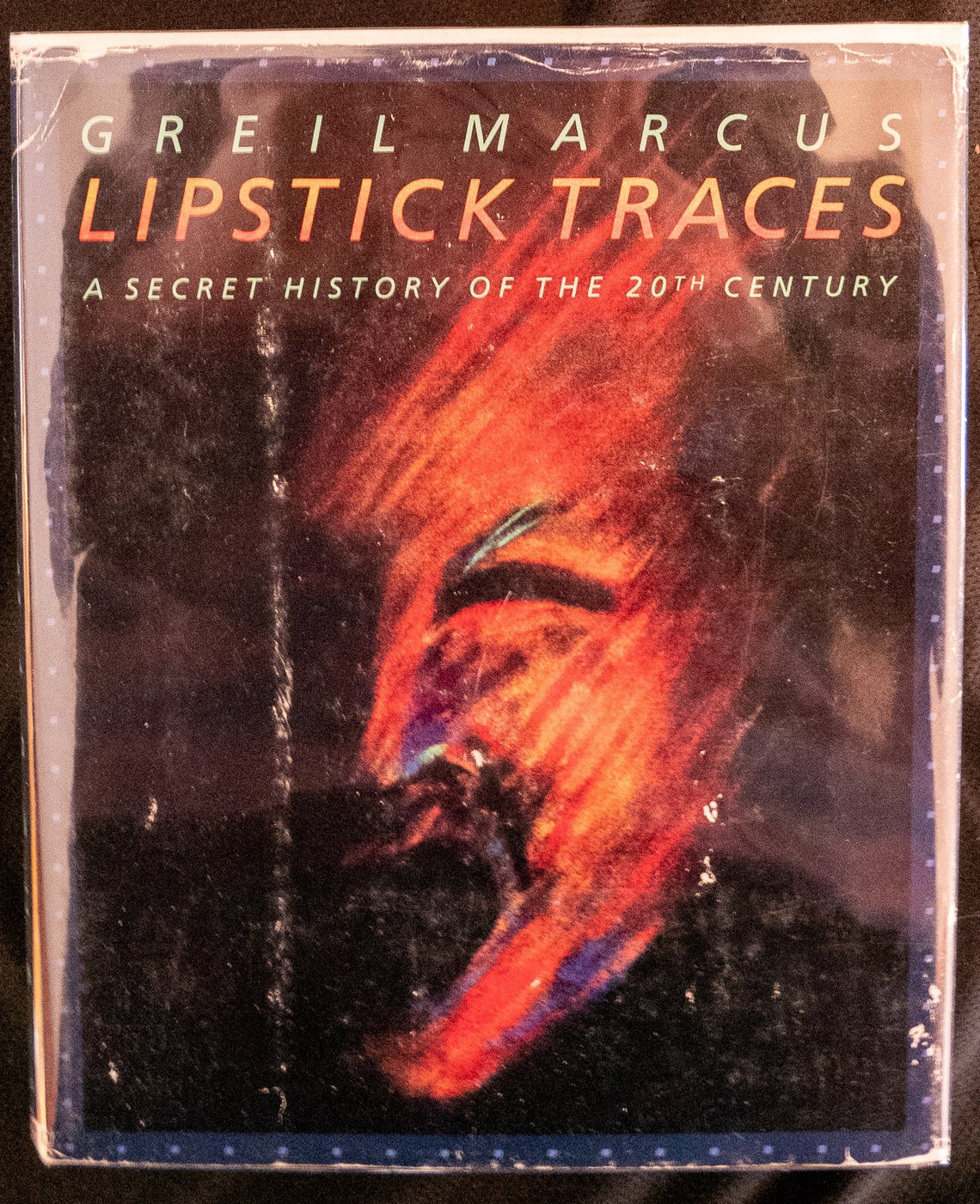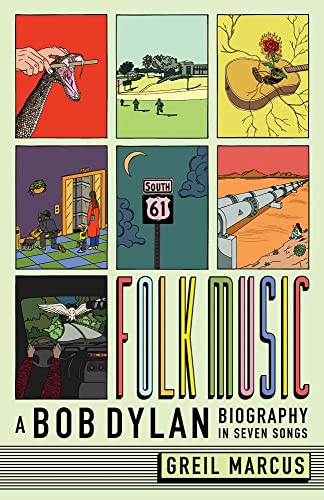
Greil Marcus in his office, September 16, 2022. Photograph by Michael Goldberg
By Michael Goldberg
Greil Marcus writing or talking about Bob Dylan is the holy grail. He is the leading authority on Dylan, and the best known and most respected rock critic in the U.S. (and probably the world). His first in-depth book about rock music, “Mystery Train” (the title coming from one of Elvis’ Sun Records recordings), published in 1975, established him as a leading authority on rock music, and his stature has only grown since then.
David Cantwell wrote in a December 2015 profile of Marcus published in the New Yorker, that nearly as soon as “Mystery Train” was published it was “short-listed as ‘the best’ or ‘the finest’ or ‘most compelling’ book ever written about popular music…”
After the book was first published, Frank Rich wrote in the Village Voice, “‘Mystery Train’ is determinedly and proudly in the tradition of such ground-breaking works of American cultural criticism as Leslie Fiedler’s ‘Love and Death in the American Novel,’ D.H. Lawrence’s ‘Studies in Classic American Literature’ and F.O. Matthiessen’s ‘American Renaissance’ (the first two of which Marcus draws from in his work); as his predecessors sought to understand Poe’s nightmares or the green light at the end of Daisy’s dock in terms of our most substantial national myths, so Marcus attempts to place such songs as Randy Newman’s “Sail Away,” The Band’s “Across the Great Divide,” and Elvis Presley’s early efforts for Sam Phillips at Sun Records into the same broad cultural context.”
Although “Mystery Train” might have seemed to some to be about a handful of musicians—Harmonica Frank, Robert Johnson, The Band, Sly Stone, Randy Newman and Elvis Presley—the book is about much more than that. As Marcus states in the intro, the book is “an attempt to broaden the context in which the music is heard; to deal with rock ’n’ roll not as youth culture, or counterculture, but simply as American culture. … [These musicians] share unique musical and public personalities, enough ambition to make even their failures interesting, and a lack of critical commentary extensive or committed enough to do their work justice. In their music and in their careers, they share a range and a depth that seem to crystalize naturally in visions and versions of America: its possibilities, limits, openings, traps. Their stories are hardly the whole story, but they can tell us how much the story matters.” This was the beginning of where Greil Marcus would go for the next 47 years, finding America, and so much more, within a handful of songs, sometimes a single song.
Born during the summer of 1945 in San Francisco, Marcus grew up in Menlo Park, a suburb south of the city; he attended U.C. Berkeley, where he earned an undergraduate degree in American studies. He saw Bob Dylan for the first time in 1963, when Joan Baez brought the determinedly scruffy singer/songwriter onstage at a show that took place in “a field in New Jersey.” One of the songs Dylan sang that day was “With God on Our Side” and, as Marcus told me during our interview, he was “absolutely stunned.” It was the beginning of an obsession with Dylan and his music.
In 1968 Marcus wrote a review of an album by the Who, and, unsolicited, sent it to Rolling Stone, the rock magazine that had begun a year earlier; two weeks later it was published in the record reviews section. Soon he was on-staff and spent a year as Rolling Stone’s record reviews editor; he lost the job due to a dispute with publisher/editor-in-chief Jann Wenner over Bob Dylan’s Self Portrait; Marcus infamously began his review of the album this way: “What is this shit?”
Over the years Marcus wrote for Creem, the Village Voice, New West, Artforum, Interview, the Wire, Salon, The Believer and many other publications including the New York Times and the New Yorker. He has written 19 books and edited another six. Perhaps his most remarkable book (and a favorite of mine) is “Lipstick Traces,” which he spent nine years researching and writing; as Andy Beckett wrote in The Independent, “‘Lipstick Traces’ began as a book about the Sex Pistols; then expanded crazily back in time to Paris in 1968, Dada in 1917, the French Revolution, and ultimately to libertarian heresies in the Middle Ages. Marcus found himself writing ‘a secret history of the 20th century,’ a search for the origins and story of the nihilistic impulse that the Sex Pistols had stumbled upon.”

Original cover of “Lipstick Traces.”
Marcus wrote a monthly column, “Real Life Rock,” for New West magazine from 1978 into 1983; that column combined an essay with a top ten at the end. Three years later, Marcus was asked to take the top ten and turn it into a 700-word column for the Village Voice, which he titled, “Real Life Rock Top Ten.” The column “had room for anything,” Marcus wrote in his introduction to “Real Life Rock,” a book that collects every column he wrote from 1986 through September 2014 (a second book, “More Real Life Rock,” was published earlier this year), “music, movies, fiction, critical theory, ads, television shows, remarks overheard waiting in line, news items, contributions from correspondents… treating the column as a forum or a good site for gossip, or the everyday conversation it has always wanted to be.”
Over time, the “Real Life Rock Top Ten” moved to Salon, The Believer, Interview, Rolling Stone and some other publications. Most recently, Marcus wrote it for The Los Angeles Review of Books, where it was published until February 2022; he was about to move it to Substack when he became ill; he has been recovering for many months and the future of the column was up in the air when I spoke to him in mid-September.

His most recent book, “Folk Music: A Bob Dylan Biography in Seven Songs” (Yale University Press), was published on October 1, 2022. It’s the fourth book Marcus has written about Dylan, the others being “The Old Weird America: The World of Bob Dylan’s Basement Tapes,” “Like a Rolling Stone: Bob Dylan at the Crossroads,” and “Bob Dylan by Greil Marcus: Writings, 1968-2010.” Additionally, a third of his book “Three Songs, Three Singers, Three Nations” is devoted to Dylan’s “Ballad of Hollis Brown.” “Folk Music” is unlike any other book about Bob Dylan, and other than Dylan’s own memoir, “Chronicles,” it gets as close as may be possible to who Dylan the singer, songwriter, recording artist and performer is, and what can be found within his recorded… Continued at Rhythms Magazine.